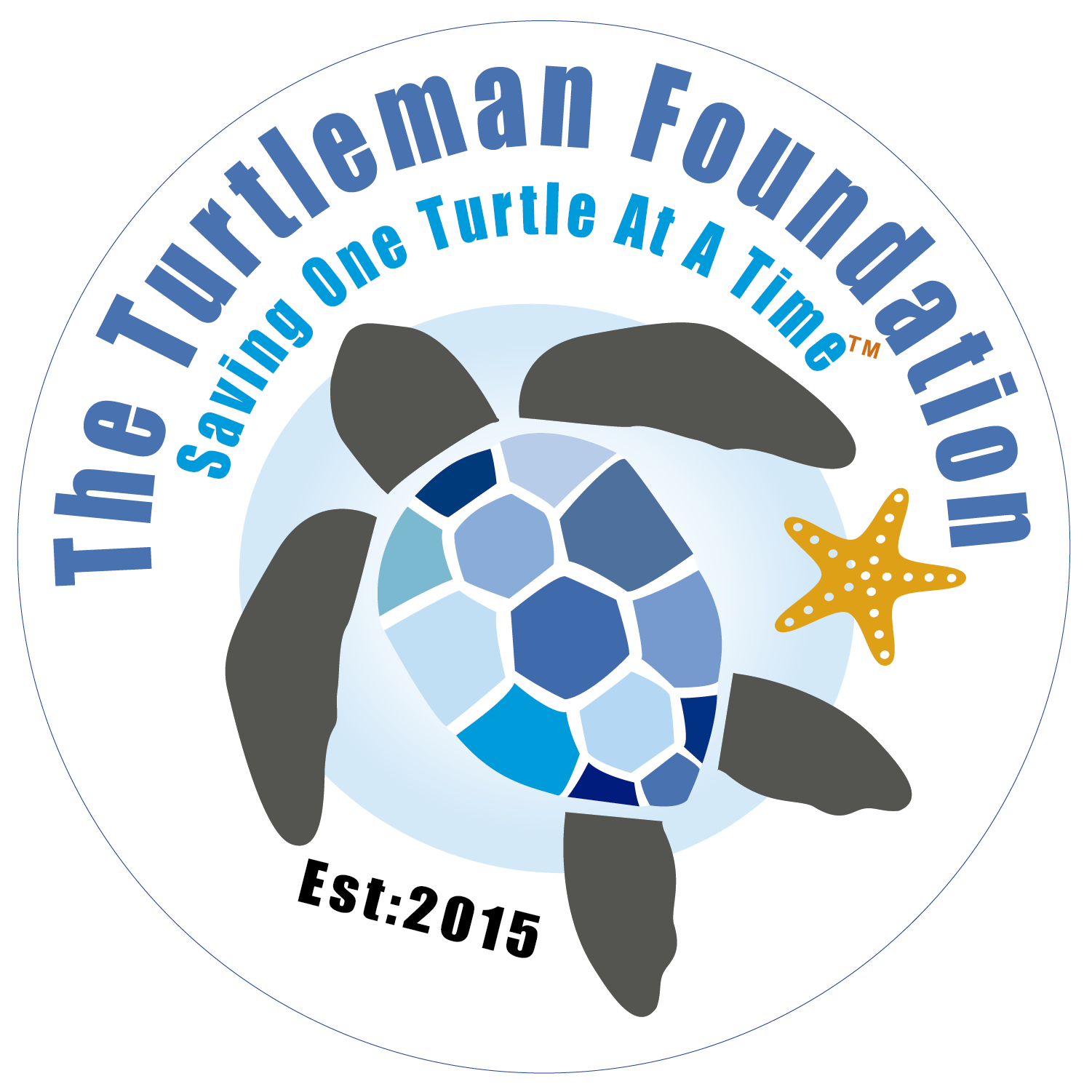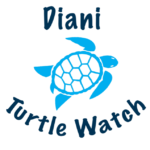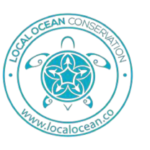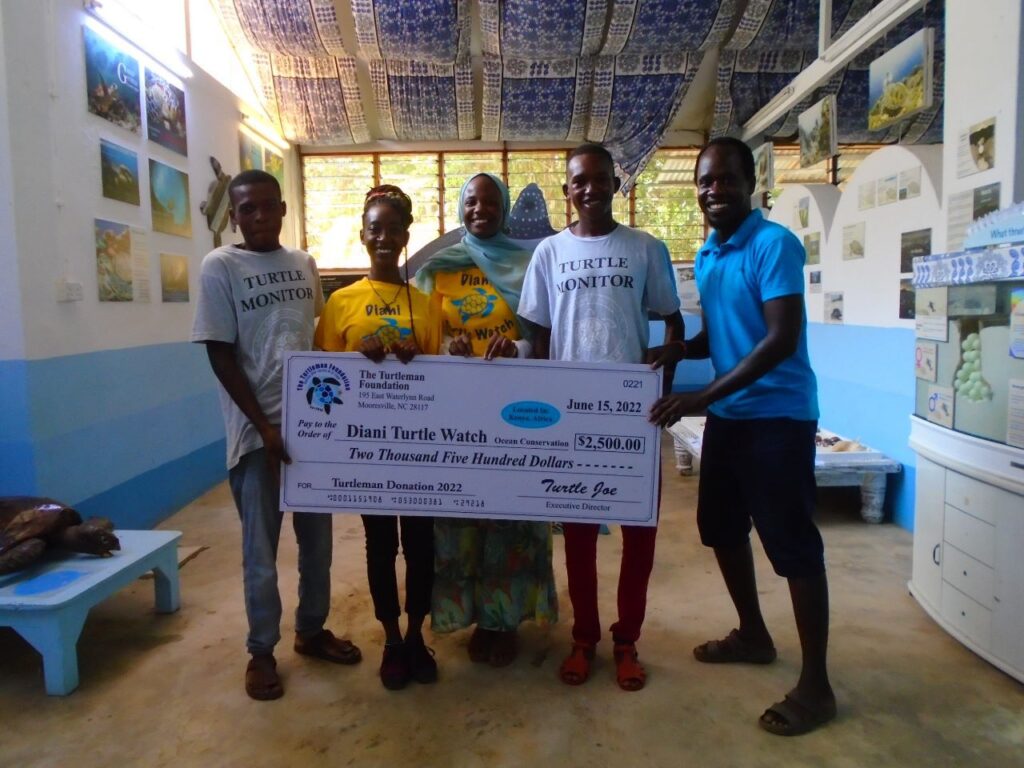
Community Engagement
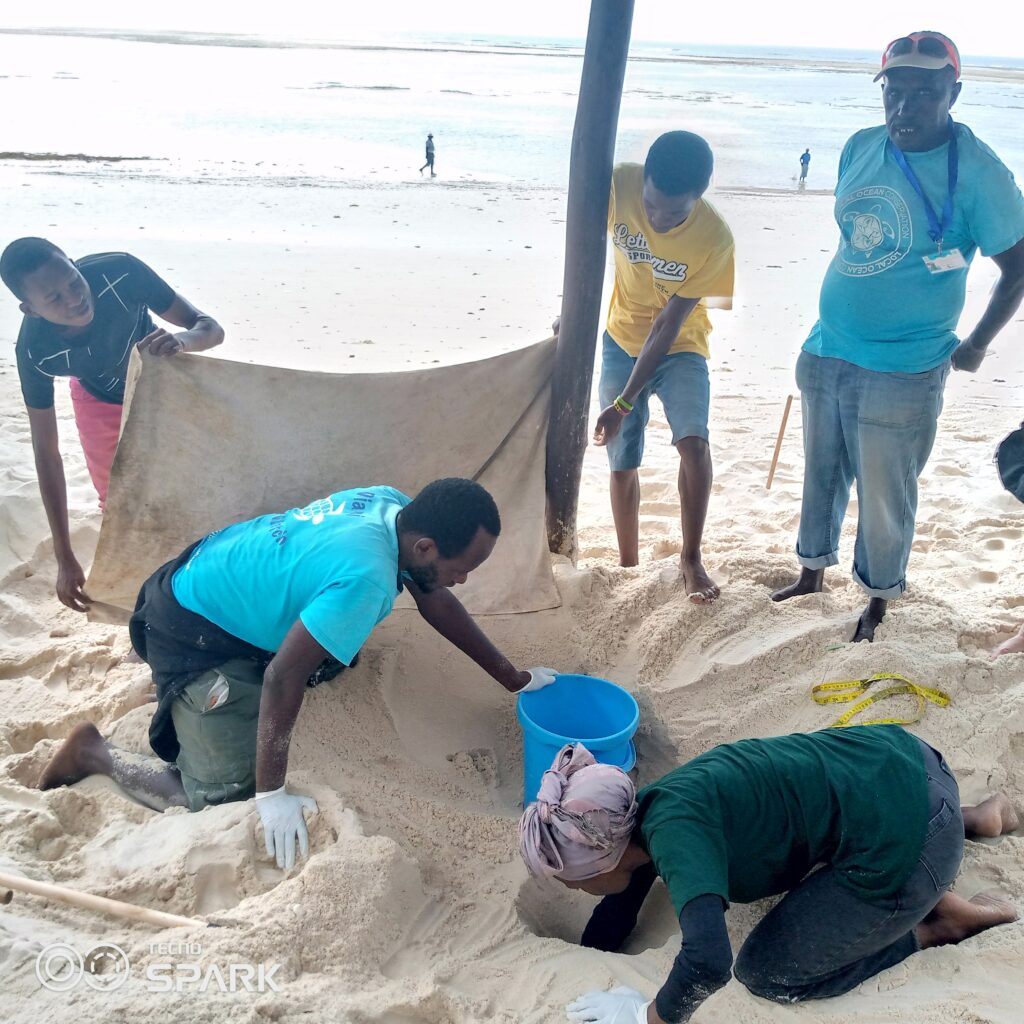
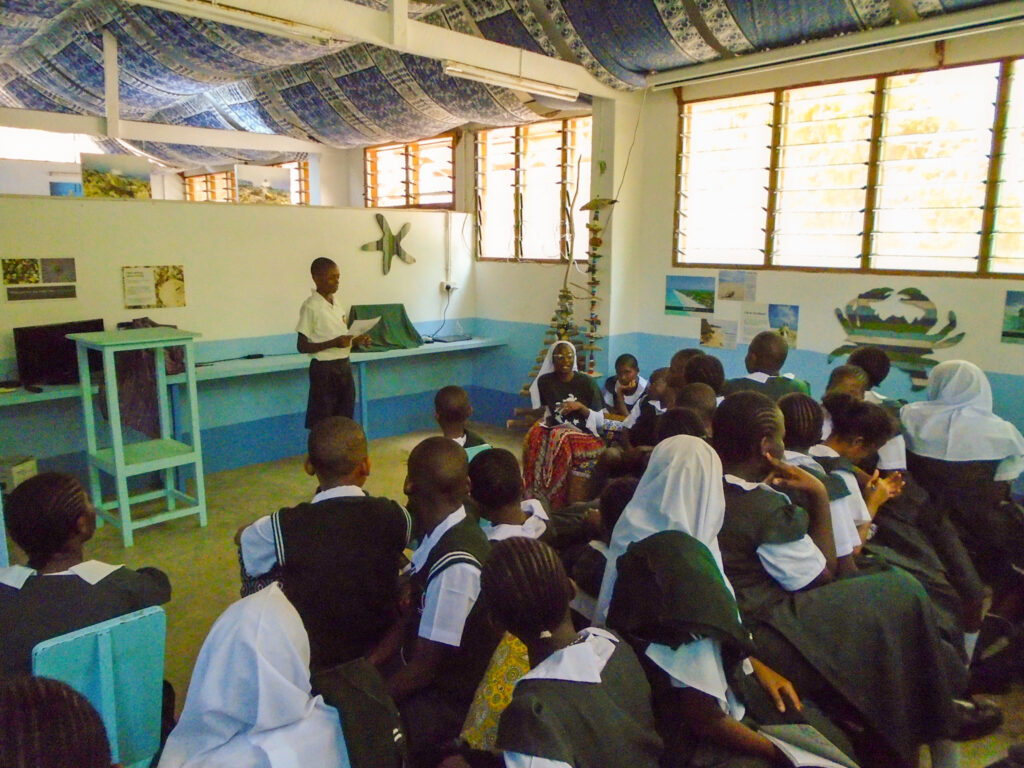
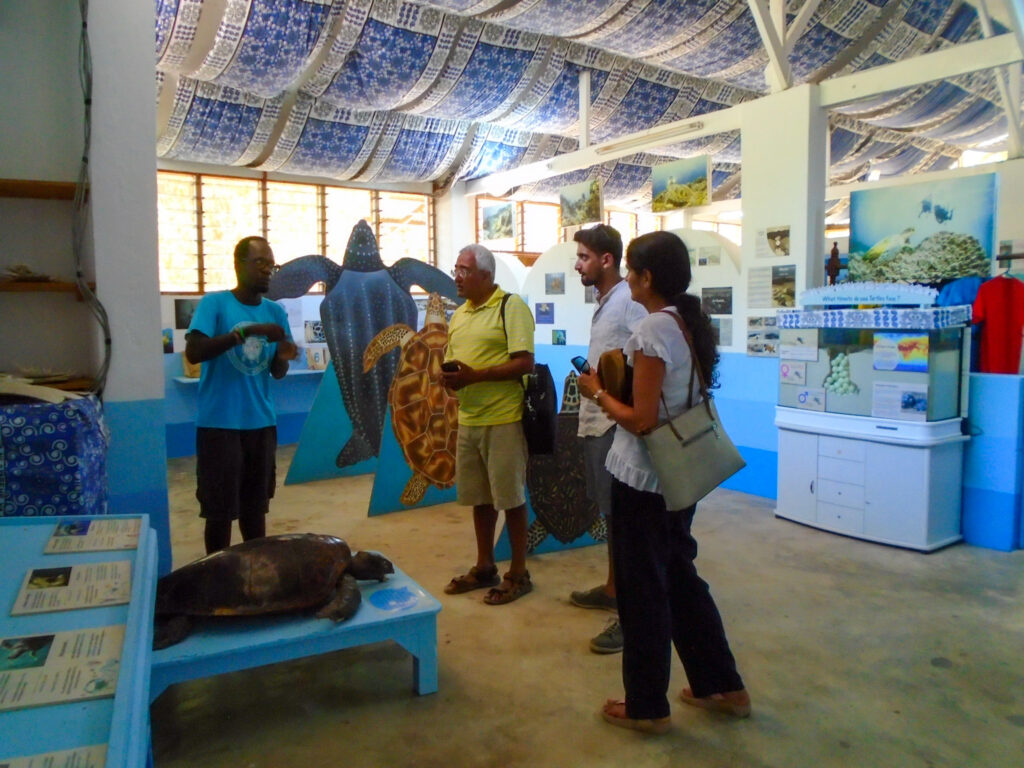
PROJECT HISTORY:
Diani Turtle Watch is program of Local Ocean Conservation. Local Ocean Conservation, previously Watamu Turtle Watch began in 1997 as a community-based organization with their focus being on human impacts to the marine world. This included beach development that hindered sea turtle nesting and frequent poaching. A team of trained turtle monitors sourced from the local community patrol the beach protecting nesting females, their eggs, and hatchlings as the emerged from the nests. Later in 1998 the By-Catch & Release Programme was launched as a mitigation measure to solve the problem of accidental sea turtle net entanglement. This significantly reduced sea turtle mortalities in the area. In 2002 the name Local Ocean Conservation was adopted as a way of encouraging local community involvement in marine conservation.
Much later in 2012 Diani Turtle Watch came into being. This was because sea turtles were killed in numbers for food and their products sold on black market on the southern coast of Kenya.
Presently Diani Turtle Watch oversees approximately 30km of the beach stretch. This is from Kongo River to Chale Island and further down to Funzi Island.
We are based out of the Marine Education Centre at the Sands at Nomad Boutique Hotel.
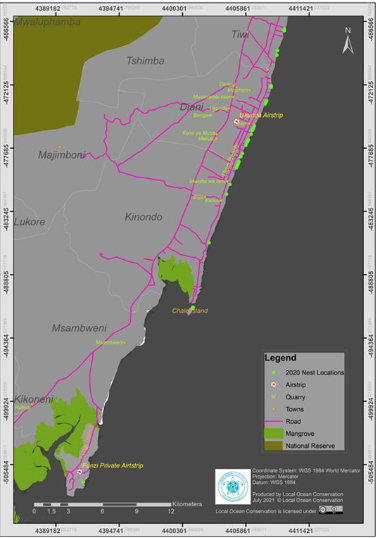
Figure 1 Map of the area covered by Diani Turtle Watch
Organization Structure
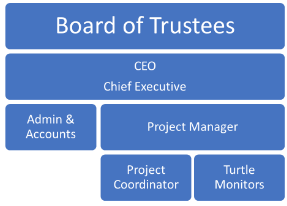
Figure 2 Organization Structure
The organization structure is as follows. At the very top we have the Boards of Trustees who oversee the whole organization. They are advisory in nature and have the decision-making authority. Then we have the chief executive officer who runs the organization. The admin and accounts office conducts the administrative roles and engages in the financial budgeting of the various projects. We have the project manager who runs and oversees the projects on a day-to-day basis. Assisting the project manager, we have the project coordinator that is responsible for the turtle monitors on the field. The turtle monitors are responsible for carrying out the various tasks on the field.
Our Accomplishment
We managed to train and employ 13 turtle monitors from the community. They are tasked with responding to sea turtle related emergencies. This includes sea turtle nest identification, relocation, monitoring, supervising hatching events, responding to sea turtle stranding, accidental by-catch and release and mortality cases. The training of the turtle monitors was sponsored by the hoteliers in Diani Beach. These were The Sands at Nomad, The Sands at Chale Island, The Maji Boutique Hotel and Almanara Luxury Resort.
In addition to this, given that only 10% of Diani Beach ismm suitable for sea turtle nesting largely because of development along the beach, hoteliers together with private cottage owners agreed to set aside part of the beachfront for sea turtle nesting. This has been possible through partnering with The Sands at Nomad, The Sands at Chale Island, The Maji Boutique Hotel, Afro Chic Boutique Hotel, Diani House Cottage and Almanara Luxury Resort. We currently have 7 of these sites Diani Beach that we refer to as sea turtle nest relocation sites.
Sands at Nomad have also been generous enough to host Diani Turtle Watch at the marine education centre where we are currently based.
Diani Beach is home to 3 of the 7 species of sea turtles. This are the endangered green turtles, the critically endangered hawksbill turtle and the vulnerable olive ridley turtle. Unfortunately, the green turtles have been frequently hunted down and killed for food and turtle oil that is thought to be a cure for asthma. Moreover, their nests have been raided and their eggs consumed as food among the locals.
Diani Beach is a popular tourist destination locally and internationally. By virtue of this it has attracted a lot of development along the beach. Hotels and private cottages have sprung up in the recent past.
Regrettably, this has come with a hefty cost to the marine environment. Marine littering particularly plastic pollution is out of control.
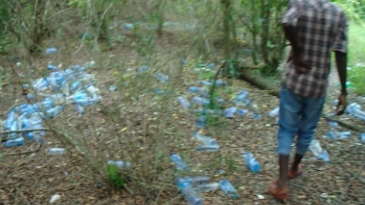
Figura 3 Contaminación plástica
The setup of sea walls by both hotels and private cottages has greatly reduced the area suitable for sea turtle nesting to only 10%.
Because of this sea turtle nests end up being laid below the high tide mark predisposing them to being washed away during high tides unless they are relocated to safer higher grounds.
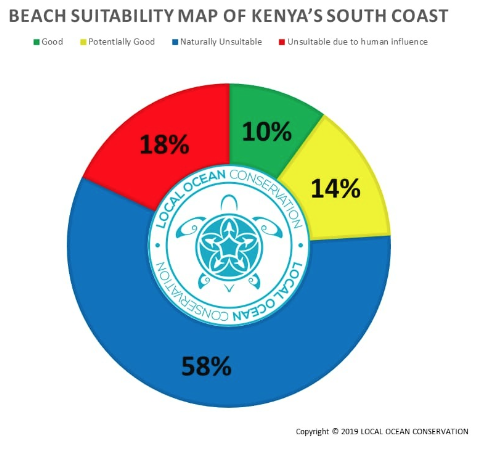
Figure 4 Beach Suitability Map of Kenya's South Coast

Figure 5 Sea wall hindering nesting of sea turtles
Sea turtle mortalities in Diani beach is also on the rise. According to 2021 end-year mortality report, the highest cause of death among sea turtles was vessel/boat strike, followed by boat engine propellers and lastly fishing hooks. It is worth pointing out that humans are the common denominator here.
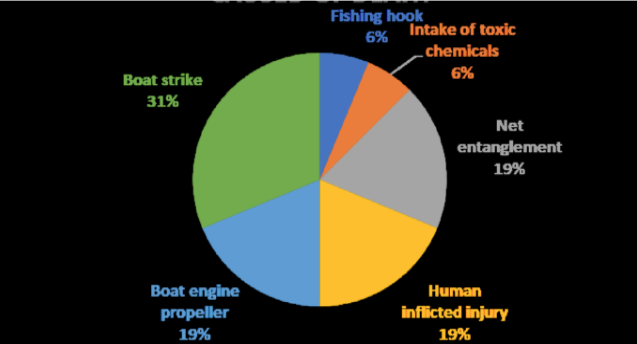
Figure 5 Sea wall hindering nesting of sea turtles
The goal of Diani Turtle Watch is to involve all stakeholders in ensuring that both sea turtles and their habitat are protected guaranteeing their survival on the southern coast of Kenya.
Equally important is the need to retrain our turtle monitors working on the field on sea turtle interaction procedures.
This for sure is in line with the objectives of Turtleman Foundation of saving sea turtles and the conservation of the ocean.
PROJECT DESCRIPTION:
The projects that will be prioritized here will be capacity development and community engagement.
Capacity Development
We intend to retrain our sea turtle monitors on sea turtle interaction protocols and proper data recording procedures as part of our capacity development efforts.
Sea turtle interaction protocols will include identification of sea turtle nests, possible relocation, monitoring, hatching supervision, and finally nest excavation to determine success rates. We will also go over the procedures to be followed in the event of an unintentional bycatch and release, as well as a sea turtle stranding on the beach. The goal here will be to educate the turtle monitors on proper sea turtle interaction procedures in the field as well as proper data collection guidelines.
Success or failure will be measured using key performance indicators, such as Q&A sessions with turtle monitors during training sessions and conducting mock surveys to aid in the correction of potential problems that may arise on the field. Data validation is used to ensure the accuracy and quality of data recorded and finally, the number of data points collected in a given year.
Community Engagement
Then we will educate the locals about marine and sea turtle conservation. Our target groups for community engagement will be beach management units, fishermen, and boat/vessel operators. This will include PowerPoint presentations as well as the distribution of publications on marine and sea turtle conservation. The goal here will be to establish new relationships and strengthen existing ones, to use this platform for information sharing related to marine and sea turtle conservation, to address critical societal issues such as poaching, and to encourage multi-stakeholder decision-making. We will hold a Q&A session to solicit feedback from the community on the effectiveness of these meetings.
The projects’ duration will be 12 months, which will be sufficient to achieve long-term goals such as the submission of accurate data on sea turtle interactions and behavioral changes among locals as a result of community engagement.
GOALS:
Capacity Development
Diani Turtle Watch will conduct training for turtle monitors at the marine education center for free. The community’s 13 turtle monitors will be retrained. These monitors will be on the beach
Capacity Development
Diani Turtle Watch will conduct training for turtle monitors at the marine education center for free. The community’s 13 turtle monitors will be retrained. These monitors will be on the beach full-time, identifying sea turtle nests, marking geo-locations, relocating nests as needed, monitoring incubating nests, supervising hatching events, and being present during the excavation process. They will also investigate incidents of bycatch and release, as well as sea turtle mortality. Proper training on procedures and data collection will be provided. The quality and quantity of data collected will be used to assess success.
With over 2 years of experience in sea turtle interaction procedures, the project manager will be fully involved in both the preparation of the training module, training of the monitors, prior field supervision, and subsequent validation of data collected over the course of a year.
Community Engagement
Community Engagement
For the community engagement, we will rent a conference room. There will 32 people in attendance at the meeting (the project manager, project coordinator and 30 invitees who are representatives from the community.)
The project coordinator, who is currently working on a master’s degree project that is community focused on marine environment issues and also oversees the education department, will assist the project manager in developing an awareness module for community engagement.
PROJECT TIME:
